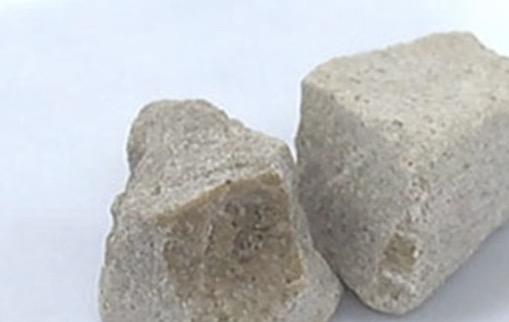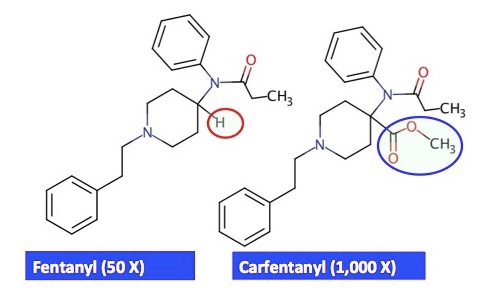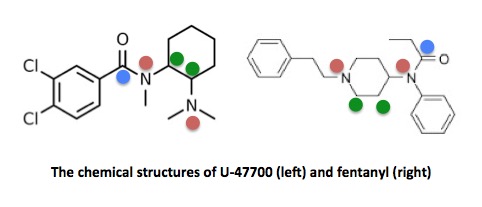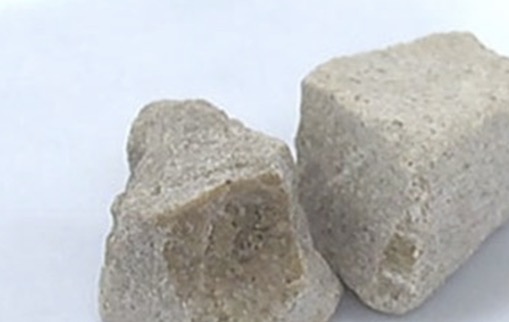
It was inevitable. Once heroin use began to soar seven years ago, it was only a matter of time until fentanyl, a cheap, easy to make, and far more potent chemical cousin of heroin joined the mix, either as an additive to heroin or a replacement for it. Just as obvious was that more potent analogs of fentanyl would enter the scene. (See: "If You Think Fentanyl Is Bad...")
They are now on the scene and are killing people. It could not be otherwise. One especially bad actor is called "gray death," which is a mixture of highly potent opioids, usually heroin, fentanyl, carfentanyl - an elephant tranquilizer that is 20-times more potent than fentanyl, and 1,000-times more so than morphine. A lethal dose of carfentanyl is about 20 micrograms, which means the one ounce is enough to kill 70 million people. How could it not be killing people? It is so potent that touching it can be fatal.

The difference in the structures of fentanyl and carfentanyl is a single change (red and blue circles), but this is sufficient to cause a large difference in potency. Figures are relative to morphine.
As if this wasn't bad enough, also included in this lethal cocktail is a drug called U-4700, a drug that was being developed as an analgesic by Upjohn (this is where the "U" comes from) in the 1970s. U-4700 never made it to the pharmacy, but it made it to the street. And, until six months ago, it was legal. (1)

U-47700 and fentanyl are quite different in structure, but the sequence of colored circles (blue, red, green, green, red) reveal similarities in the pharmacophore (1).

"Gray death" Photo: WFMY News
Although the number verifiable cases of overdose deaths from gray death are only 46, the real number is certainly higher (and probably much higher), since only deaths in New York and North Carolina were counted. Other states are grappling with this. It's just not showing up in the statistics—yet.
"Gray death is one of the scariest combinations that I have ever seen in nearly 20 years of forensic chemistry drug analysis,"
Deneen Kilcrease, manager of the chemistry section at the Georgia Bureau of Investigation.
Worse still, U-4700 is insanely easy to make. Combine two chemicals—N,N,N'-Trimethyl-1,2-cyclohexanediamine and 3,4-dicholorbenzoic acid and you have your drug. It probably takes five minutes. I ran this same type of reaction hundreds (if not thousands) of times in my former career. But it's even easier than that. Both of those chemicals are commercially available, the first from 12 vendors and the second from about 50. Yes, you can take both of them, toss them together and have U(nlimited)-4700 just like that.
Anyone who thinks that this problem is even manageable, let alone going away, is deluding him or herself.
Next: What government is and is not doing right. Hint: Not.
(1) The DEA used a provision called an emergency scheduling in November 2016.
(2) A pharmacophore is a part or fragment of a chemical compound that is responsible for a particular biological or pharmacological response. Two molecules that have very little in common structurally can have the same pharmacophore and produce the same biological or pharmacological response.



